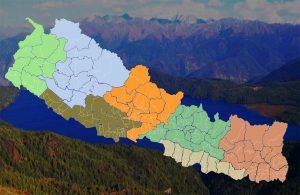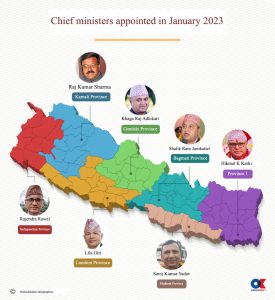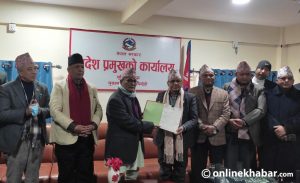
The federal government has suspended the regular printing of electronic driver’s licenses, commonly known as smart licenses, directing provincial governments to take over the responsibility. The Department of Transport Management (DoTM) cited ongoing issues with printing machinery and smart card software as the reasons behind the decision, restricting further license printing to only essential cases.
Director General Uddhav Prasad Rijal of the DoTM stated that the move is in line with Nepal’s Constitution of 2015, which delegates transportation-related responsibilities, including driver’s license management, to provincial governments. He emphasised that continuing to print licenses at the central level contradicts the principles of federalism.
“By holding onto provincial responsibilities, the problem has only become more complex. The department will no longer print licenses except for essential needs. Provinces can now print licenses bearing their names and government symbols,” said Rijal.
Provinces to manage licensing independently
Under the current system, the federal government retains the authority to formulate national transportation policies, but the examination of drivers, collection of vehicle taxes, and other transportation-related tasks fall under provincial jurisdiction. Since 2017, the DoTM has transferred control of transport and licensing offices to the provinces, which have been establishing their own offices to streamline services.
Rijal pointed out that the process of accepting applications, conducting exams, collecting biometrics, and managing revenues is already being handled by provincial offices. He urged provinces to take immediate steps to establish their own printing facilities, noting that reliance on the central printing facility in Kathmandu’s Minbhawan should end.
Currently, there are approximately 2 million driver’s licenses pending printing, involving around 1.7 million smart cards. The department has faced multiple delays in printing due to technical problems, including issues with integrating new cards into the system. To address these challenges, the DoTM is working on integrating the driver’s license system with national ID cards, allowing traffic police to verify licenses digitally.
Challenges and future direction
The DoTM has encountered numerous challenges, including reliance on foreign suppliers for smart card chips, legal disputes, and system integration issues. These challenges have hindered the department’s ability to fulfill its duties efficiently, leading to delays and backlogs. The situation has been further complicated by the fact that the department only has one printer, which is insufficient to meet the daily demand of 5,000 licenses.
Rijal acknowledged these challenges, stating, “We have been centralizing the printing process, which is against the essence of federalism. Now, it’s time for the provinces to manage their own systems. The department will no longer be involved in printing regular licenses.”
He also mentioned that the DoTM will continue to issue licenses for essential cases, such as for students studying abroad, migrant workers, and security personnel on peacekeeping missions, but all other licenses will be managed by the provinces.
Steps towards decentralisation
In recent meetings with provincial transport ministers, the DoTM has reached agreements to fully transfer the responsibility of license printing to provincial governments. The federal government has also signed an agreement with the Department of National ID and Civil Registration to link national IDs with driver’s licenses, streamlining the process.
Rijal emphasised that provinces need to prepare by acquiring their own printing machinery and smart cards. He added that the federal government would no longer be the fallback for provinces in managing license issuance.
“The complexity of the current system has made it difficult for the department to continue with central printing. Provinces now have the authority and responsibility to manage license printing independently,” Rijal concluded.

























